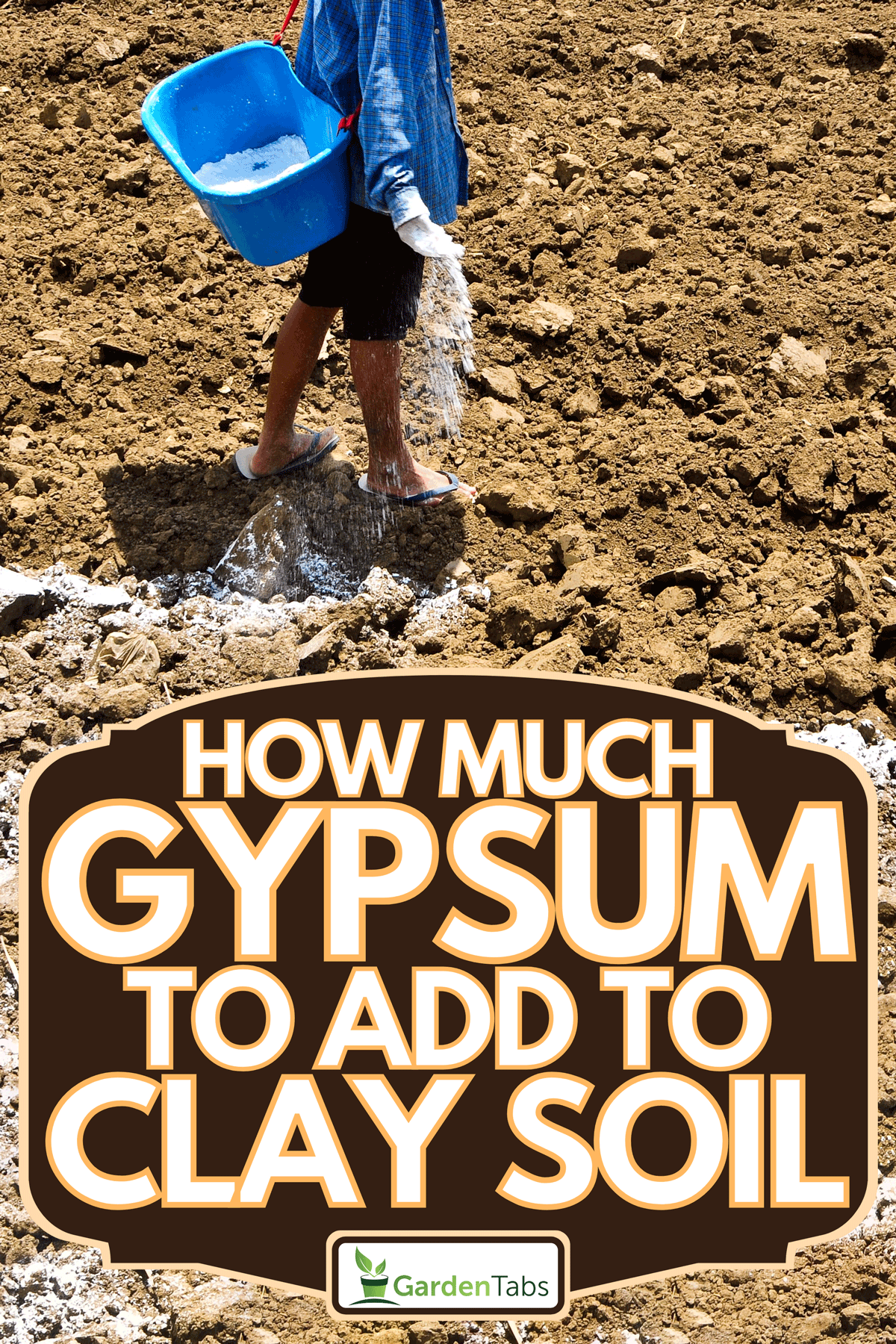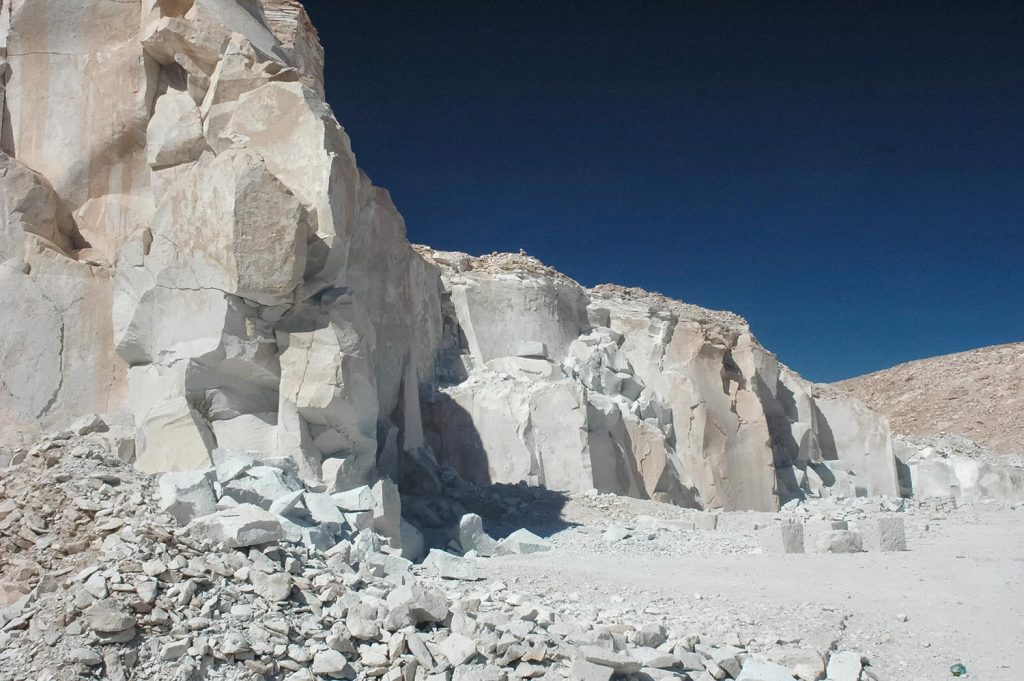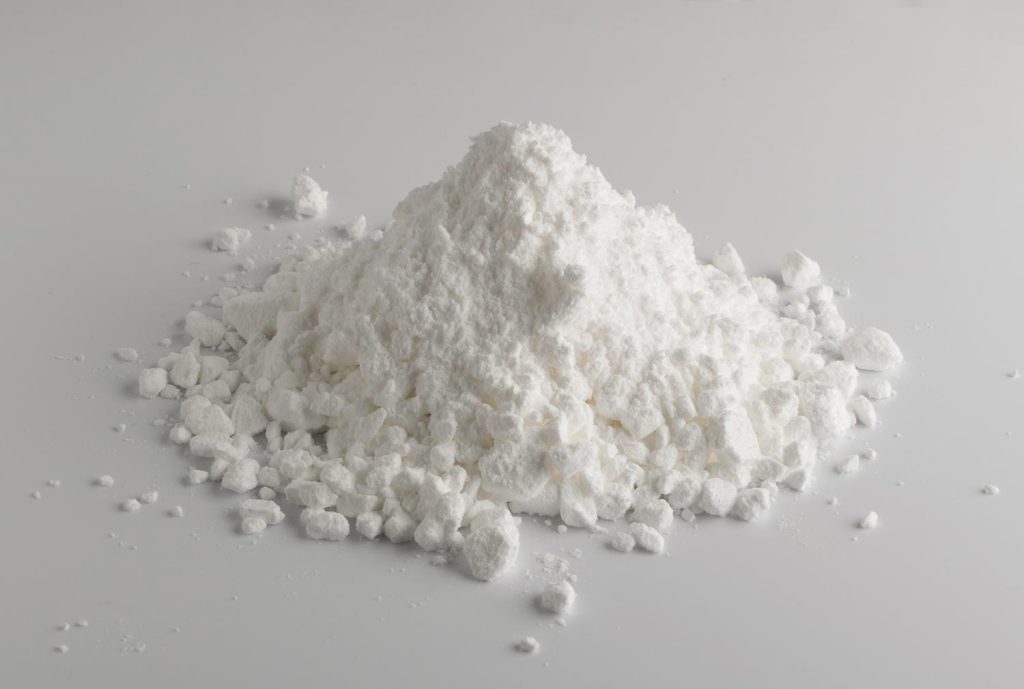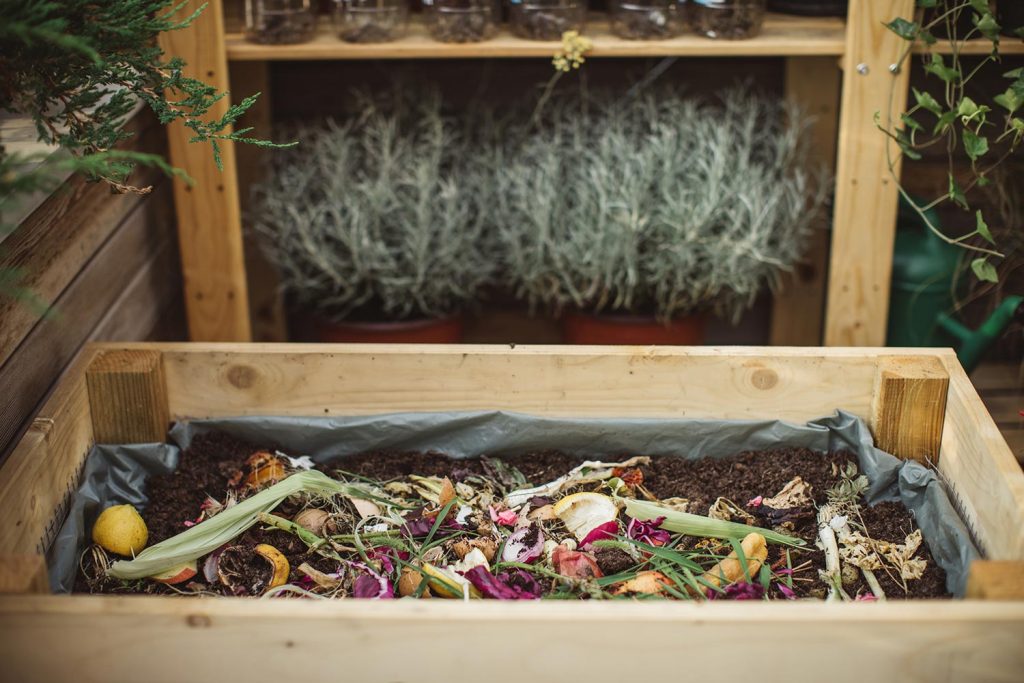If you have clay soil, you may be interested in adding materials that improve the soil quality. Because you can get great results with gypsum, you may wonder how much gypsum should be added to clay soil. We did some research so that you can leave out any guesswork.
In most cases, you can add 2.2 pounds of gypsum for every 10 square feet. Or, add 40 pounds of gypsum for every 1,000 square feet of soil being amended. You can add gypsum to your soil during any season without difficulty.
Gypsum is useful for altering soil, especially when there are issues with salinity, poor drainage, or if you need to raise calcium levels. In this post, we will cover how to work with gypsum, whether you are prepping soil for planting or already have existing seedlings or established plants. Continue reading to discover common problems with soil quality, drainage, and plant growth that can be improved with the addition of gypsum.

Amending Soil With Gypsum
If you have very dense clay soil prone to compacting and it has a pH level above 5.0, you may want to consider adding some gypsum. Adding gypsum puts more sulfur and calcium into the ground while removing aluminum. Gypsum will not change soil pH like sulfur.

Soil can become very sodic or have high salinity which makes drainage poor. Also, the particles of clay soil are likely to hold onto runoff from fertilizer and other elements, creating an imbalanced soil quality which stunts the growth of plants and causes roots to struggle.
Consider adding gypsum to clay soil to protect against salt injury, raise water permeability so roots can soak up water and nutrients, and break down compacted soil. Test your soil before adding gypsum. If soil is very acidic, add lime to correct the soil before adding gypsum.
Before you add gypsum to your soil, first mix in other organic materials that benefit the soil like compost, manure, or fertilizer. You may have a better experience mixing gypsum pellets into your soil versus using powder or dust.
Tips For Using Gypsum
Resist the urge to overly apply gypsum to your soil, and make adjustments in response to the results of soil testing. Too much gypsum in soil can cause a lack of iron and manganese, and any aluminum that gets leeched out of soil can move to nearby watersheds.
It can take anywhere for a few months to a few years for the gypsum to effectively alter the soil. Results vary depending on how compacted your clay soil is, the pH level, and whether you apply pellets, liquid, or powdered gypsum.
If your lawn is established, use 40 to 50 pounds of gypsum for every 1,000 square feet. A new lawn with a dense clay composition should get 300 pounds of gypsum for 1,000 square feet. You can apply gypsum with a spreader and lightly water your property after applying.
For best results, apply gypsum after aerating the soil, allowing the material to fill in the empty spaces rather than sit at the surface. Gypsum will not burn plants, is safe around people and pets, and in some cases may need reapplication more than once a year.
Can You Apply Gypsum And Fertilizer Together?

It is best to apply gypsum and fertilizer separately, allowing separate times to work the soil. Gypsum is not a fertilizer but a soil conditioner. It may take two to three months for gypsum to change the soil structure, reduce compaction, and raise porousness.
Because of the particle size of gypsum and fertilizer, if they were applied together, one of the materials might flow out of the soil sooner than desired. Fertilizer is meant to be mixed into the soil, but gypsum gets spread on the surface or is better applied after aeration.
Before adding gypsum or fertilizer, test your soil to see its nutrient composition and assess any deficiencies and clay density. Fertilizer is typically added in the spring before planting, and allowed time to amend the soil. Gypsum is usually added in the fall or spring.
Fertilizer is usually only added one time a year, but gypsum may need to be added more than once in a year. Depending on the soil quality and permeability, gypsum may only need to be added every three years.
Does Gypsum Need To Be Watered In?
You should add water to gypsum to work into the soil, as it is often spread over the soil surface and not mixed in. Another method is to spread gypsum over the soil after it has been thoroughly aerated, allowing gypsum to fall deeper into the soil's open spaces.
Because gypsum leeches aluminum from the soil and regulates salinity, pulling unwanted elements to the sub levels of the soil below the roots of plants, watering helps facilitate this process. Soil that has heavy clay may trap nutrients that gypsum pushes out.
Keep in mind that gypsum pellets, liquid, and powders are water soluble and get absorbed by the soil. Don't apply gypsum to already wet soil that is sticky or compacted. Instead, apply gypsum to soil that has been conditioned with organic matter and then water it in.
If you plan on spreading gypsum over your soil using granules, pellets, powder, or liquid before a rain forecast, you may not need to water it in too much. Resist the urge to over water or mix gypsum into the soil. Instead, use enough moisture to allow it to seep in slowly.
Check out this water-soluble gypsum powder on Amazon.
Can You Put Gypsum Around Plants?

You can certainly place gypsum around plants. Take note that this soil conditioner is nontoxic, provides health benefits to flowers, lawns, vegetables, shrubbery, and trees. However, don't add too much gypsum, as it can cause a deficit of manganese, iron, and magnesium.
Adding gypsum to a vegetable garden is a smart move, as this natural mineral helps prevent blossom end rot disease and deficits of calcium in the soil. If you notice your plants are struggling to reach their full potential in clay soil, adding gypsum improves aeration.
Compacted clay soil can make it difficult for roots to soak up water, oxygen, and essential nutrients in the soil. Adding gypsum helps increase sulfur and calcium levels, promotes healthy roots, reduces soil salinity, and doesn't cause burns.
If you have potted plants, make a mix of two to three handfuls of gypsum for every one gallon of water. Add one or two cups of this solution to increase your plant's health and growth. A half a pound of gypsum on soil with a high salt level will prove beneficial.
What Is The Best Soil Amendment For Clay Soil?

A mix of organic materials is the best amendment for clay soil. Adding organic compost, manure, and gypsum help gradually improve and change soil quality. When organic compost and manure get mixed into the soil, they add beneficial nutrients plants need to thrive.
Gypsum is a great soil amendment because it helps open up compacted clay soil, improving permeability so roots can draw water and nutrients. Typically, clay soil is prone to becoming incredibly waterlogged or dry, making it difficult for plants to get nutrients.
When specific elements in soil get washed out and locked into the sub levels of soil, the roots are unable to reach what they need. Compacted soil reduces oxygen levels and may hold onto salts from fertilizer and other sources.
It is critical to test soil before adding any type of soil amendment, especially if it has a high amount of clay. The pH level needs to be supportive of plant life—neither too alkaline nor acidic. Amending soil adds vital nutrients, restores soil balance, and raises permeability.
Check out this organic soil amendment on Amazon.
In Closing
We hope after reading this article, you are more informed and confident about using gypsum and amending clay soil. If you have property with clay soil, it is critical to improve the quality so it is easier to grow healthy plants with established root systems.
Adding 2.2 pounds of gypsum for every 10 square feet of soil will provide visible benefits to your plants. Gypsum is good at improving soil quality because it clears up poor drainage issues, balances saline or alkaline soil, and promotes healthy root systems.
Before you leave, don't skip out on reading the following helpful articles:
How Often To Water Plants In Clay Soil [And How To Make It Fertile]


